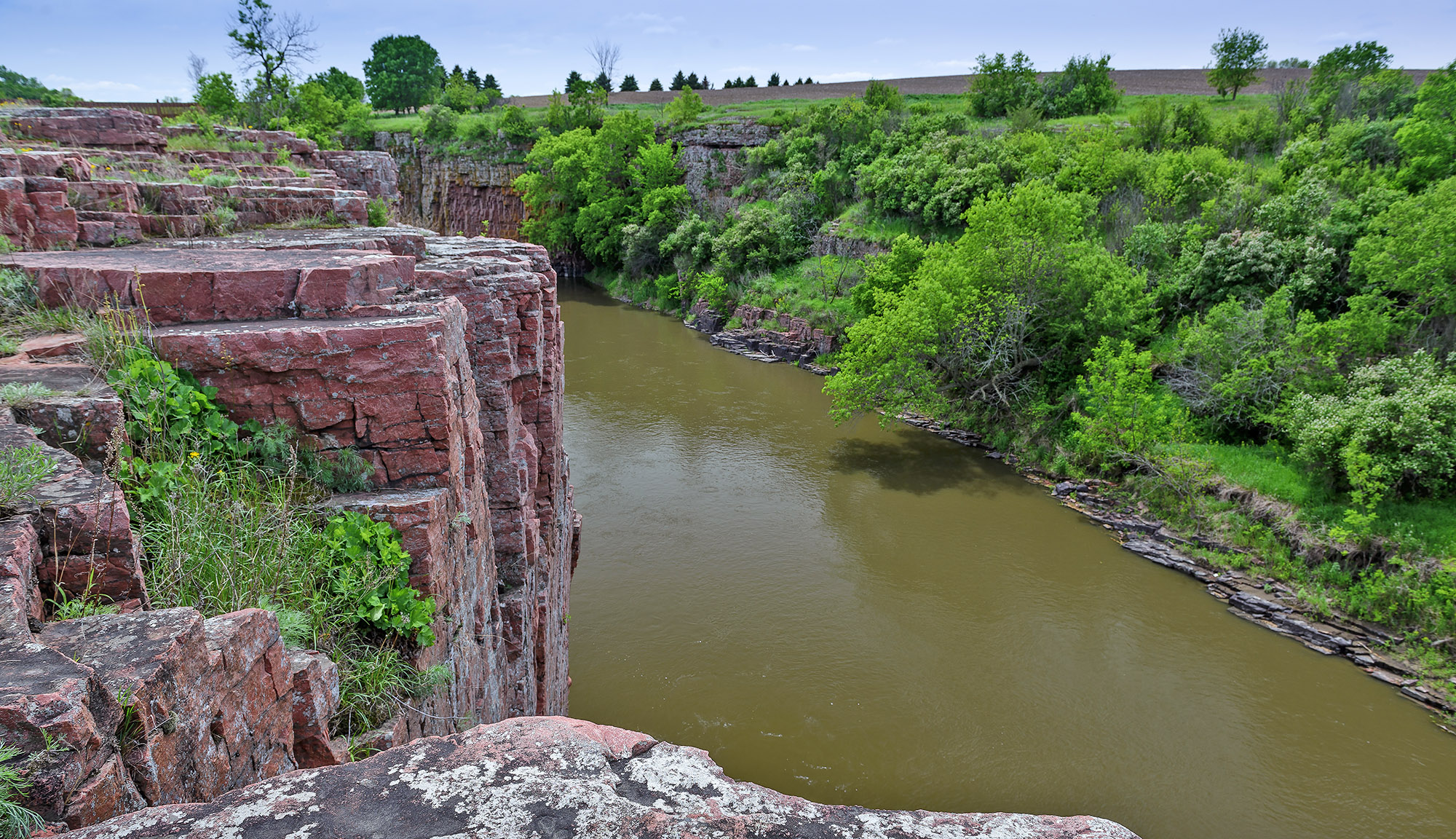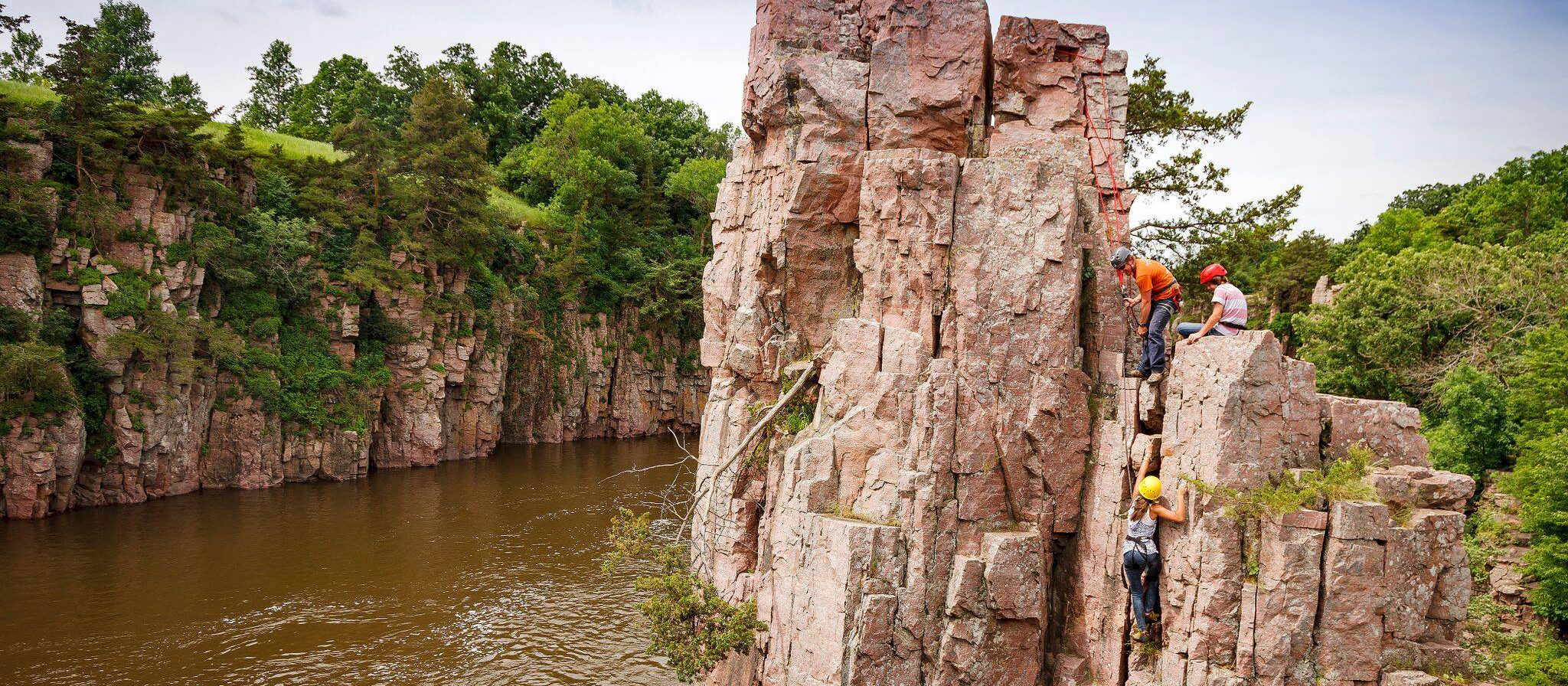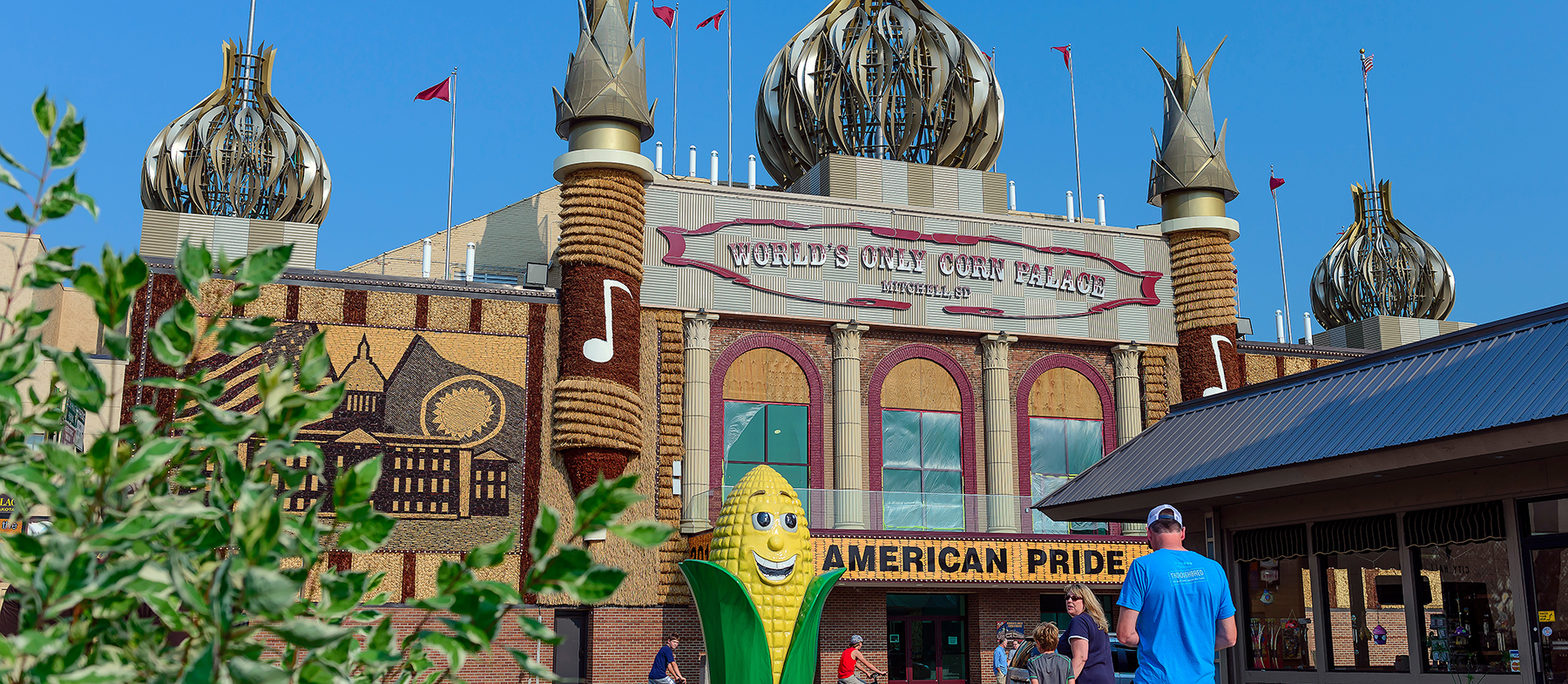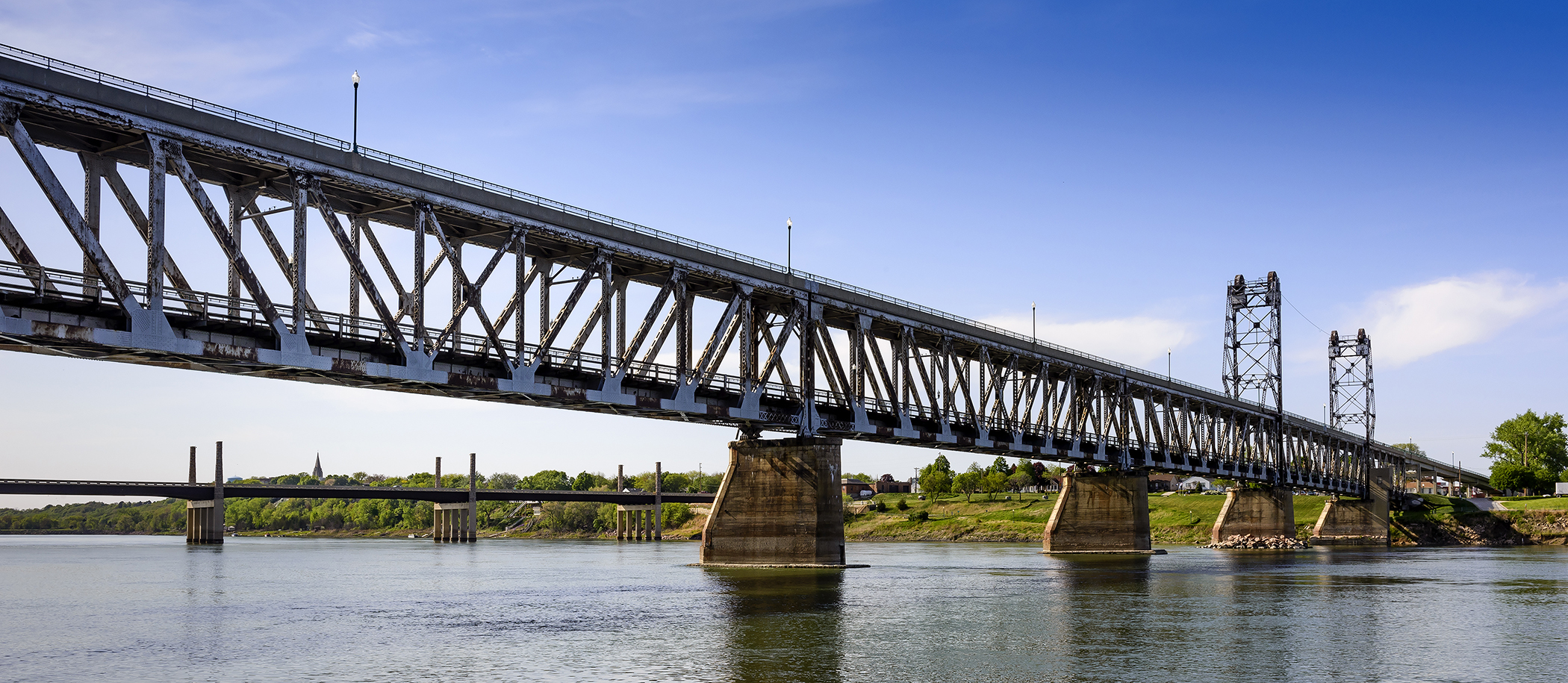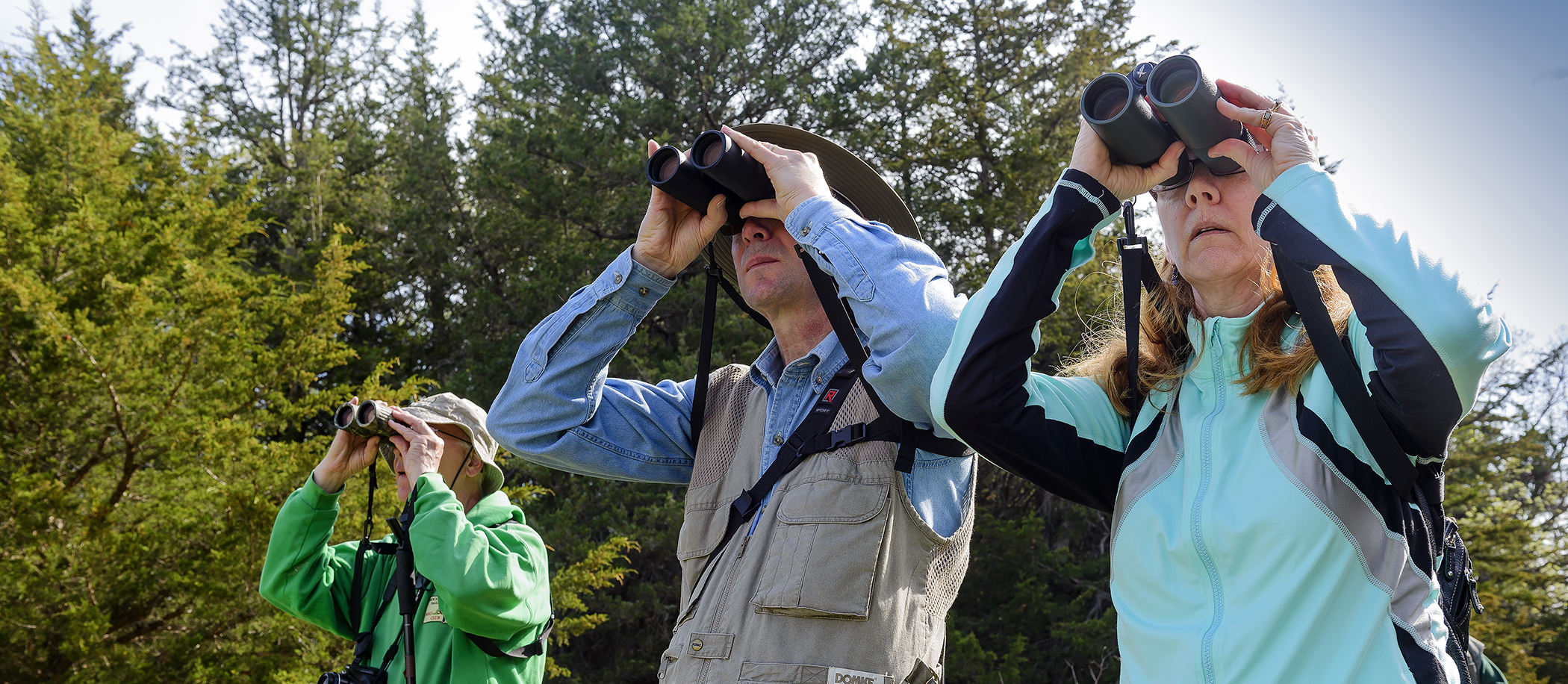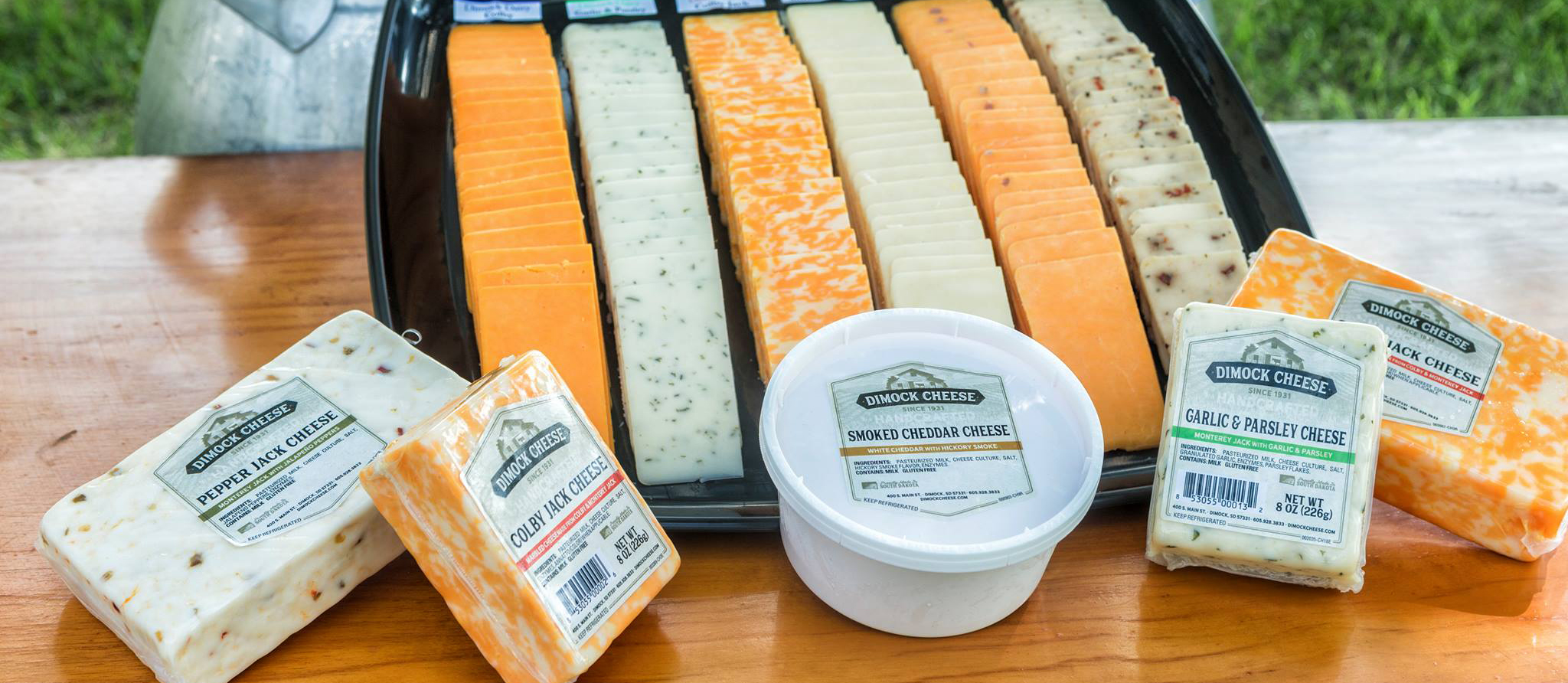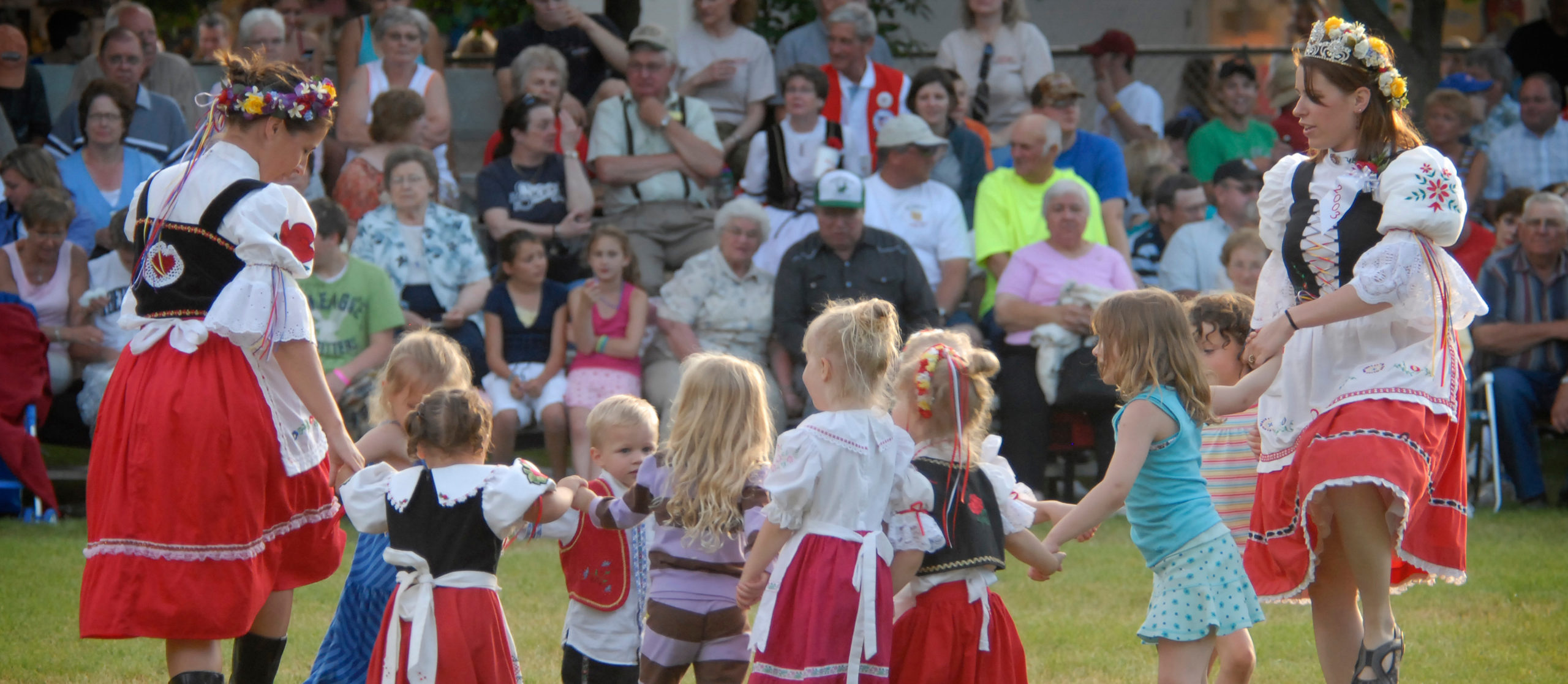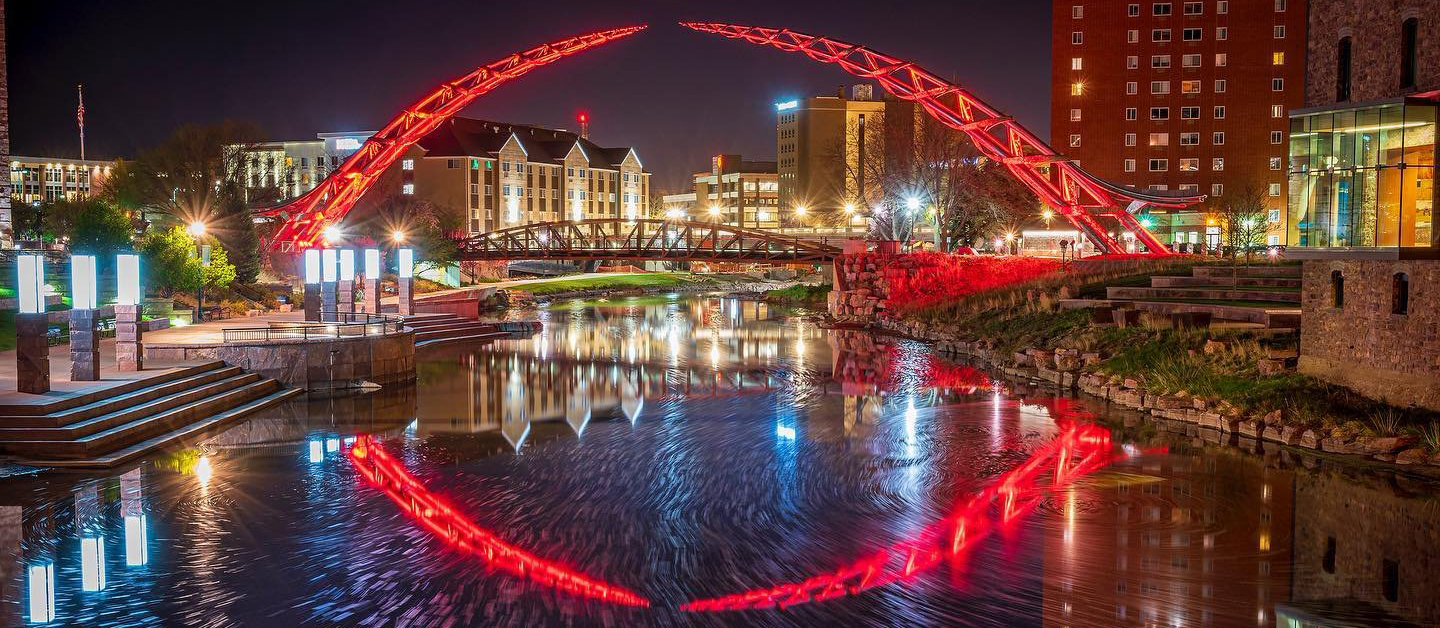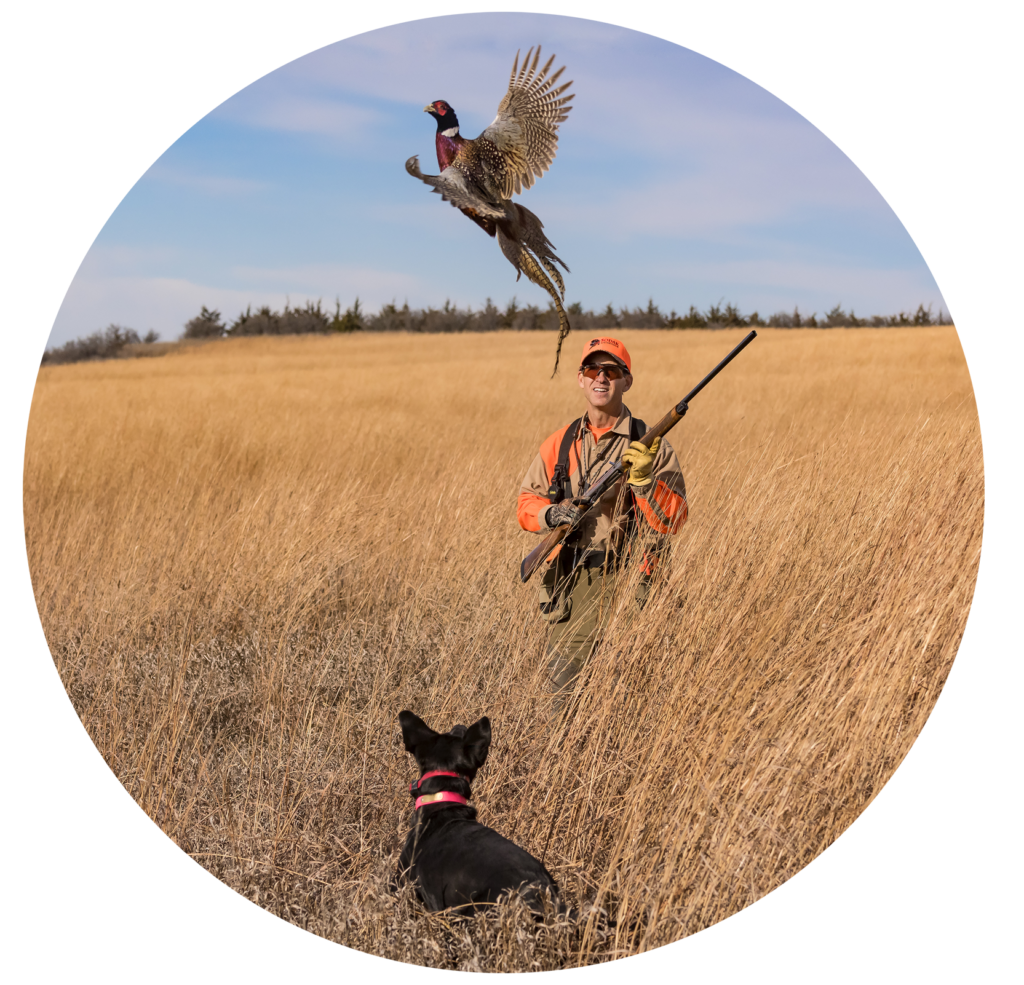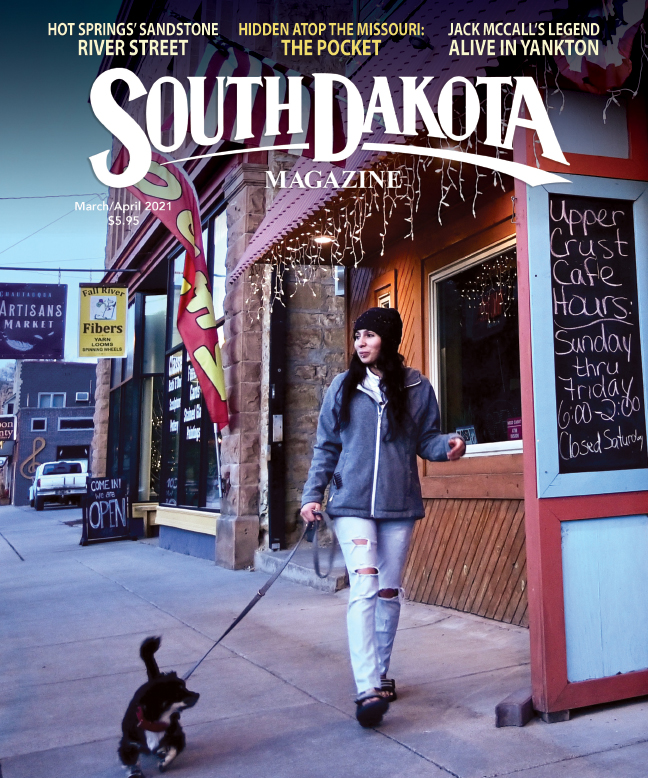
FUN FACTS
Experience what life was like for the first people who lived here. The Prehistoric Indian Village boasts an archeological excavation site that continues to produce a strong collection of artifacts.
See over 15,000 American, European, and non-Western instruments from all cultures and historical periods at the internationally recognized National Music Museum in Vermillion.
Falls Park is a “can’t miss” free attraction in this region. Located just north of Downtown Sioux Falls, the park is a beautiful site of quartzite rock and cascading falls with numerous lookout points to explore.
Welcome to Southeast SD Tourism!
More stories on Southeast SD Tourism …
Did Jess Jump Devil’s Gulch?
The sheer beauty of quartzite cliffs towering above Split Rock Creek are enough to attract visitors to northern Minnehaha County near Garretson. But the scenery is only part of the magic. Most come to see the spot where legendary outlaw Jesse James supposedly jumped an 18-foot-wide gorge in 1876 to escape a posse after robbing a Northfield, Minn., bank.
Chasing Cats
In the spring of 1949, Roy Groves was a 64-year-old grandfather who lived with his wife Alice in a little white house just a short walk from Toby’s Lounge, today a legendary chicken shack in Meckling. He stood just under 6 feet tall, was stocky and had the quiet countenance you might expect from the grandfatherly figure shown in black and white photographs with an old fishing hat perched atop his head.
An Original River Town
The ever-growing delta of the great Missouri borders Springfield on the south, and a state prison housing 1,200 men sits on the north side of town. But you can’t pigeonhole Springfield as a river town or a prison town. It’s more complicated than that. Ask John McNeill, a singer-preacher-teacher who moved there with his wife, Susan, in 1976.
A Week at the Dells
…The terrain is unique with steep cliffs, natural stairs and stony perches that help to get to eye level with our feathered friends. And to be honest, that’s really how I first came to think of the Dells as more than just a neat place where the river had cut through 40 feet of Sioux quartzite, carving an impressive canyon in the middle of the eastern South Dakota prairie.

